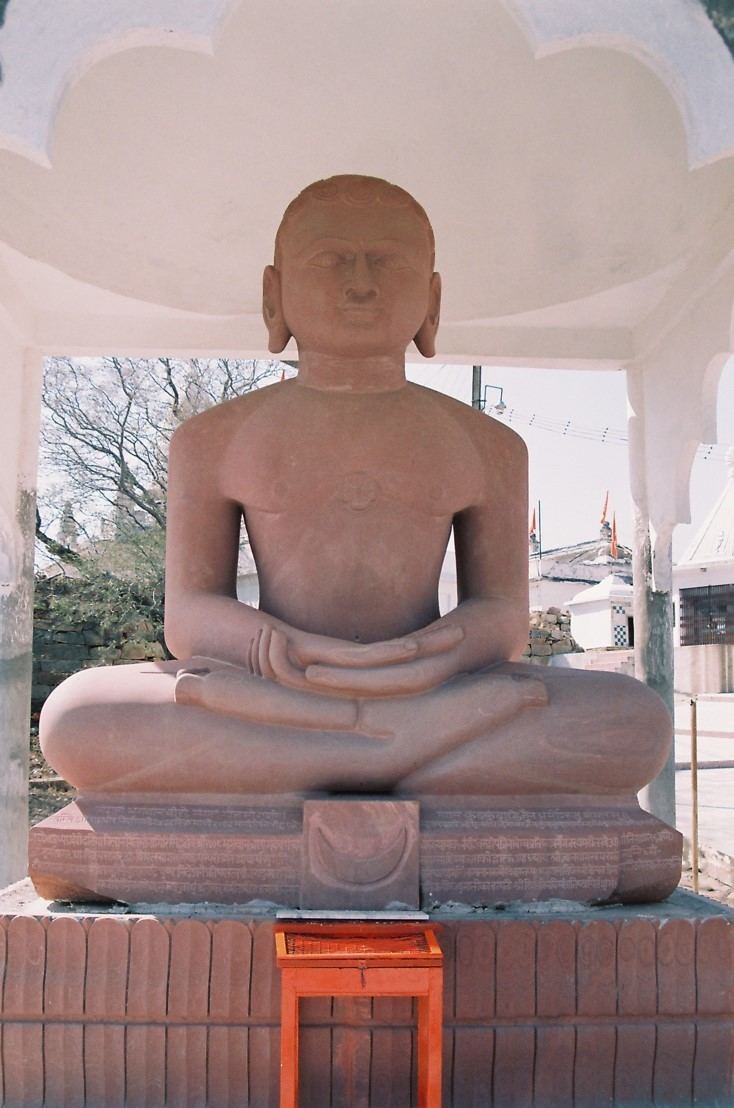Alternate name(s) Chanda Prabhu Father Mahasena Name Chandraprabha Chandraprabha | Mother Lakshmana | |
 | ||
Prayer of Sri Jwalamalini Jina Shasana Devi of Chandraprabha Thirtankara
O Avinashi | Kid Viral | Age 10 | Classical | Chandraprabhu Swami
In Jainism, Chandraprabha was the eighth Tirthankara of Avasarpini (present half cycle of time as per Jain cosmology). Chandraprabhu was born to King Mahasena and Queen Lakshmana Devi at Chandrapuri to the Ikshvaku dynasty. According to Jain texts, his birth-date was the twelfth day of the Posh Krishna month of the Indian calendar. He is said to have become a siddha, i.e. soul at its purest form or a liberated soul.
Contents
- Prayer of Sri Jwalamalini Jina Shasana Devi of Chandraprabha Thirtankara
- O Avinashi Kid Viral Age 10 Classical Chandraprabhu Swami
- Biography
- Main temples
- References
Biography
Chandraprabha was the eighth Tirthankara of Avasarpini (present half cycle of time as per Jain cosmology). He was born to King Mahasena and Queen Lakshmana Devi at Chandrapuri to the Ikshvaku dynasty. According to Jain texts, his birth-date was the twelfth day of the Posh Krishna month of the Indian calendar. He is said to have become a siddha, i.e. soul at its purest form or a liberated soul.
Main temples
- Tijara Jain Temple - The temple was established in 1956 following the recovery of an idol of Chandraprabha.
- Sonagiri Jain Temple,Gwalior
- Jainimedu Jain temple,Kerala
- Naliya Jain Derasar in Naliya, Gujarat
- Saavira Kambada Basadi in Moodabidri, Karnataka
- Bhiloda Jain Temple - It is a 12th-century temple
- Chandravati, about 30 km from Benares (India) - It is an ancient temple standing on the banks of the river Ganga and is believed to be about 300–400 years old.
- Prabhas Patan
- Sowcarpet, Chennai - This beautiful temple of white marble is located in Mint Street in the Sowcarpet locality of Channai (India). This temple though quite new derives inspiration from the famous Dilwara temples of Mount Abu.
- The Nagaraja Temple in Kanyakumari district after which the town Nagercoil got its name was a Jain temple. Recently unearthed inscriptions establish that it was indeed a Jain temple until the mid 16th century AD. It was slowly transformed into a Hindu temple.
Nāga (snake god) a famous local deity for all classes of society. The local deities were thus included in their ways of worship as devas. They worshipped Nagaraja alias Darnendra, the Sasana devata and Yakshan is the guarding angel of Parasvanatha, the 23rd Theerthankara
British collector stated that it was a Chandraprabha temple and is famous for ayurvedic treatment. T. A. Gopinatha Rao, an eminent epigraphist and archaeologist, reported that the descendants of Jain monks were living within the premises of the temple until 1900. Besides the inscriptions, one can find bas-reliefs of Mahavira Vardhamana, the 24th Teerthankara, Parasvanatha the 23rd Tirthankara, his yakshi Padmavathy, Ambika yakshi, Aruhans and probably that of Adi Bhagavan and Neminatha as well, according to the local people living in and around Nagaraja temple.
Chandraprabha is associated with Half Moon emblem, Naga tree, Vijaya or Syama (Dig.) & Vijaya (Svet.) Yaksha and Jvalamalini (Dig.) & Bhrikuti (Svet.) Yakshi.
